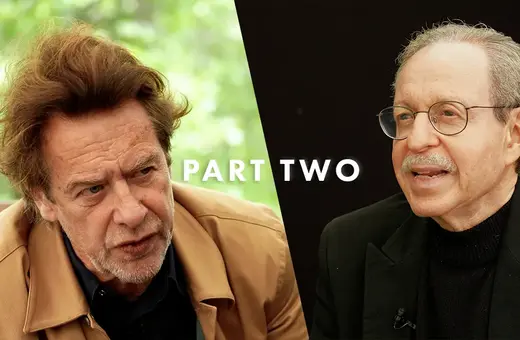Plato distrusted art as a dangerous deception. But his fear of images came from his appreciation of their the power. As every embodied being, Plato lived in an inescapable world of images and he used them powerfully to communicate his ideas, writes Radcliffe Edmonds.
Images are powerful; they strike our senses – whether through vision, hearing or touch – and they impress themselves on our minds. Plato is notorious for his distrust of images and the people who make them; his Republic is filled with discussions about banning the poets from the city and restricting what, when and how images can be circulated. But Plato’s suspicions stem from his appreciation of the power of images and his fears about how that power can be misused.
That same appreciation shows itself in Plato’s own use of images, not just his elaborate myths filled with vivid imagery of the torments of the afterlife or the shape of the heavens, but even in his chosen form of writing. The dialogue, the genre which Plato chose instead of the expository treatise, is a representation of conversations, filled with details of persons, places, and things imitated through the medium of writing. These images – of Socrates drinking the hemlock while his friends weep around him, of the drunken Alcibiades in the doorway trailing garlands of ivy and violets, of the charioteer of the soul pulling violently back on the reins when he catches sight of the beloved – all stick in the mind and the memory.
For Plato, the basic problem of images is that they both resemble and differ from the real thing...Images always involves some distortion of reality.
How then do we grapple with the power of images? We know that what they show is not actually in front of our eyes. An image re-presents something else; it makes that other thing present to the observer, but in a mediated way. For Plato, the basic problem of images is that they both resemble and differ from the real thing. This means that an image may easily be mistaken for the real thing, but also that it gives the viewer a false impression. Images always involves some distortion of reality.
If, to use Socrates’ example of illusion in Plato’s Republic, we reach for the image of the stick under water where it appears to be, we will miss it; if we think that the stick is as bent as it appears, we fail to understand its actual straight form. Likewise, the moon is not ‘a ghostly galleon’ tossed on a stormy sea. There is no ship sailing through the sky, glowing with eerie light, nor is the sky really an ocean roiled by a tempest.
The solution is to treat images as signs or analogies that can help us to see beyond the image to the real world. We see that the moon appears to go in and out of the clouds like a ship tossed by the waves, and we can reason that the apparently bent stick will seem straight when pulled out of the water. If we look beyond the immediate impression that the image makes, we can use our reason to judge it more accurately.



















Join the conversation